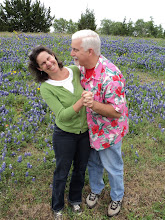Harmonic convergences have ordained that I’m not done pondering wilderness yet.
For my recent post on “Mapping the geography of hope: our place in the wilderness,” I once again used a quotation without having read its source. My latest hit-and-run involved Wallace Stegner’s oft-repeated phrase “the geography of hope.” (That’s Stegner in the photo above.) I didn’t think I’d left the phrase gasping for the air of its original context, but this week I backtracked and read Stegner’s famous 1960 “Wilderness Letter,” which argued powerfully that the federal government should set aside sweeping tracts of wilderness to remain largely untouched by human hands. Since my post had expressed the modest hope that private landowners, especially responsible ranchers, could be full participants in, rather than obstacles to, wilderness preservation, I thought, “Oh, help and bother!”
Then my sister forwarded me a lovely email from her friend Karin Teague, who noted that “we as a species are SO far from understanding and practicing living harmoniously with the land, with all our technological toys and need for speed and basic greed, THANK GOODNESS we had visionary thinkers like John Muir and Aldo Leopold who advocated for wilderness protection, otherwise we would have lost forever so many extraordinary landscapes.” Help and BOTHER.
Finally came the news of Stewart Udall’s death. As Secretary of the Interior, Udall presided over the passage of the Wilderness Act of 1964, the act that Stegner’s letter helped bring into existence, the act by which the government protected millions of acres from our “need for speed and basic greed”—a piece of legislation that not only kept foundational landscapes untouched, but advanced the idea that such landscapes have been necessary to the formation of the American character. Alright already!
To move ahead, I need to move back first. I am the product of a politically mixed marriage (Democratic mother, Republican father), though I have generally landed on my mother’s side, or somewhat to her left, most of the time. But learning about the hoops that our friends who are small farmers, ranchers, and chefs must jump through in order to keep up with rules designed primarily for agribusiness, I’ve begun foaming at the mouth over government regulation, which pleases my father. Our Madroño adventure has taught me about the daunting bureaucratic gauntlet through which community-minded entrepreneurs must run, and it gets my dander, hackles, and dyspepsia up.
These producers often see their customers every day and consequently feel a profound personal connection and responsibility to them. But they’re forced to run the same maze of regulations as do the agribusiness giants who don’t know me from Adam. Agribusiness’s faceless relationships with its customers are driven by the bottom line, a much more tangible measure of success than the idealistic-sounding yardsticks of community or environmental well-being. But my farming and ranching friends, whom I see every week at market, know that we are intricately bound together at many levels, not merely at the bottom line. Our health—economic, environmental, familial, personal—is a package deal. None of us prospers unless we all do.
So, yes, I’ve learned to be skeptical of government regulation. And yet, and yet... government shapes not just the reality of America, but the idea of America as well. As much as I hate stupid regulations, I hate even more the possibility that, without some external restraints, our apparently insatiable appetites might destroy the very source of our richest symbols and concrete sense of liberty.
Flying over West Texas not long ago, I noticed that parts of the Permian Basin have been carved up into thousands of—well, I’m not sure what. I saw a network of dirt roads leading to what looked like empty squares of bare earth, which I presume are somehow connected to the oil and gas industry.
I know, I know: it’s not as if the Permian Basin were the Garden of Eden before. So what have we lost by carving up this cussedly dry and famously inhospitable landscape? Back to Stegner: “Let me say something on the subject of the kind of wilderness worth preserving. Most of those areas contemplated are in the national forests and in high mountain country.… But for spiritual renewal, the recognition of identity, the birth of awe, other kinds will serve every bit as well. Perhaps because they are less friendly to life, more abstractly nonhuman, they will serve even better.”
Texans have traditionally prided themselves on their ability to subdue and conquer even the most unpromising land—to make it pay, whether through cotton or cattle or petroleum. One of the unfortunate effects of this pride has been to minimize the value of the land as it exists before being “improved.” We treat it like, well, dirt, and not like our patrimony. In such cases, it seems that government, as Udall and his allies saw, is the only answer to our apparently endless “need for speed and basic greed.” Until we demonstrate that we (both Texans and Americans) are able as a people to restrain ourselves from devouring what sustains us, I continue to support (wise) government intervention to save us from our grotesque appetites. There’s astonishingly little legislation that encourages us to feed our neighbors and the land that sustains us as we would have ourselves fed: with mutual respect and self-restraint. But I’ll support it when I see it and push for it when I don’t. (Sorry, Dad.)
Stegner quotes Sherwood Anderson as saying that the wild nature of the prairie has the capacity to “take the shrillness out of” us. Maybe I need to go spend the night under the vast West Texas sky to lose some of my own shrillness. But I’ve quoted Sherwood Anderson without ever having read anything by him, so at least I know what my next blog topic will probably be.
—Heather
Heather: Catherine Keller, Face of the Deep: A Theology of BecomingWhat we’re reading
Martin: George Perkins Marsh, Man and Nature; or, Physical Geography as Modified by Human Action





